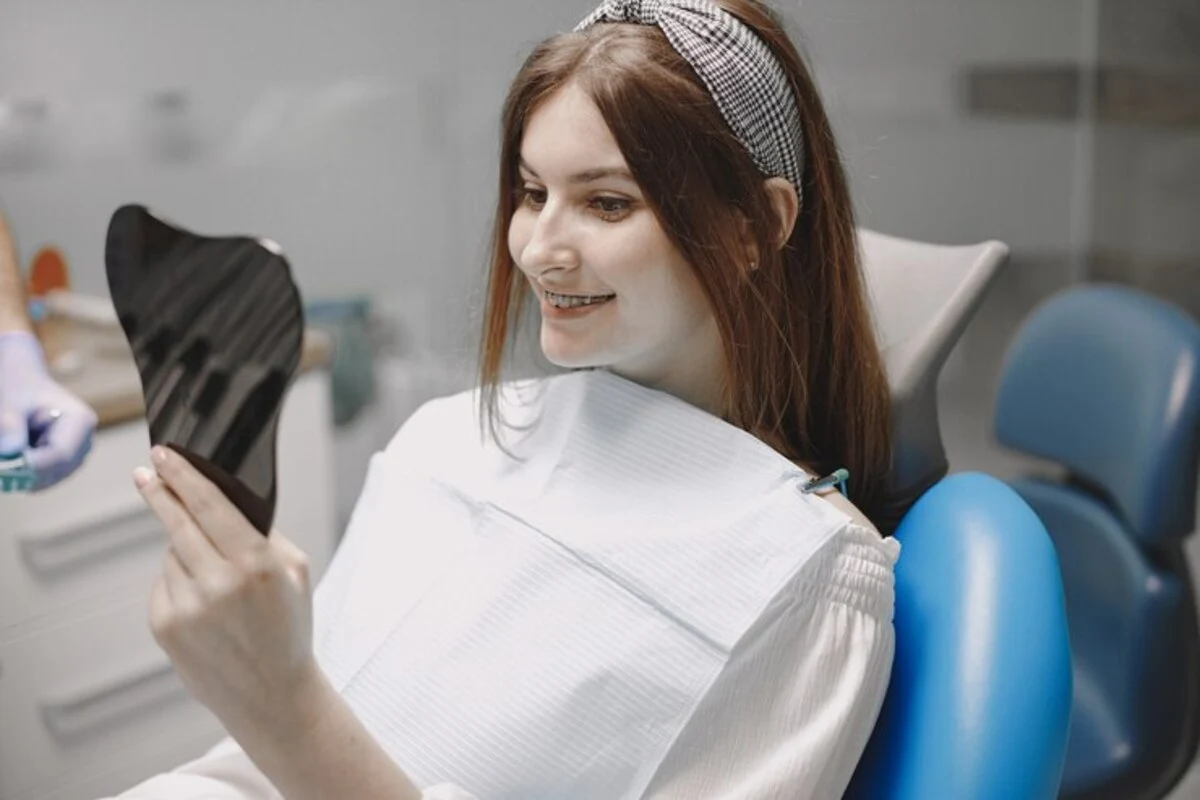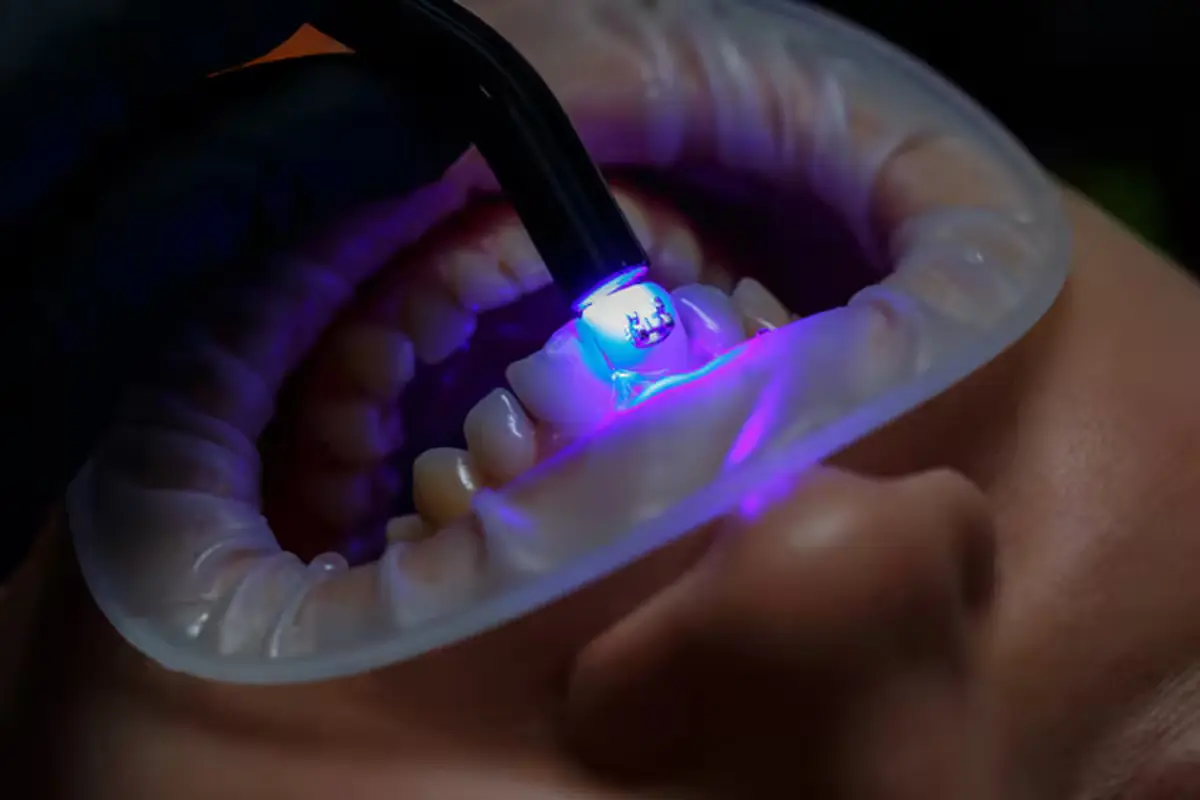Biomimetic dentistry represents a cutting-edge approach in dental care, focusing on the emulation of the natural properties of teeth to create restorations that are not only aesthetically pleasing but also functionally integrated with the biological characteristics of the surrounding oral environment. This introduction to biomimetic applications in dental veneers explores how this innovative field is transforming the landscape of cosmetic dentistry. This article has been written by Fortune smile dental care clinic to give you enough information about this field.
Introduction to Biomimetic Dentistry and Veneers
Dental veneers have traditionally been used as a solution for enhancing the appearance of teeth, correcting issues such as discoloration, chips, and gaps. The conventional materials used, like porcelain and composite resins, while effective, often overlook the mimetic aspects that biomimetic dentistry strives to achieve. Biomimetic dentistry, on the other hand, leverages advanced materials and techniques to replicate the natural durability, flexibility, and aesthetic of tooth enamel.
The core principle of biomimetic dentistry is the preservation of as much of the natural tooth structure as possible, utilizing materials that closely mimic natural dental tissues. This approach not only improves the appearance of veneers but also enhances their integration with natural tooth function, promoting long-term oral health. The application of biomimetic principles in the creation of dental veneers is a response to the need for more sustainable and health-conscious treatments in cosmetic dentistry.
In pursuing biomimetic veneers, dental professionals aim to restore teeth to their natural toughness, appearance, and longevity by using advanced adhesives and ceramics that closely replicate the mechanical and optical properties of natural tooth enamel.
Read it: Biomimetic Techniques in Dental Inlays: The Future of Dentistry
These materials are engineered to bond seamlessly with the underlying tooth structure, reducing the risk of detachment or failure and mimicking the natural response of teeth under various conditions.
The transition to biomimetic veneers also involves a meticulous layering technique that captures the subtle translucency and color variations of natural teeth. This technique not only enhances the cosmetic appeal but also ensures that the veneers are virtually indistinguishable from natural teeth. By focusing on such detailed aesthetic and functional attributes, biomimetic veneers offer a superior solution that aligns with the natural beauty and resilience of human teeth.
As we delve deeper into the materials and techniques that make biomimetic veneers a preferred choice for modern cosmetic dentistry, it becomes clear that this approach is not merely about superficial enhancement. Instead, it is about creating solutions that are deeply integrated with the body’s natural systems, promoting not only cosmetic enhancement but also the overall health and functionality of the oral cavity.
Materials and Techniques in Biomimetic Veneers
In the development of biomimetic dental veneers, the choice of materials and the techniques used for their application are critical to achieving outcomes that are not only cosmetically appealing but also durable and biocompatible.
Read it: Biomimetic Approach to Dental Implants
This section explores various materials and techniques that embody the principles of biomimetic dentistry, focusing on how these elements contribute to the success of veneer applications.
Materials Used in Biomimetic Veneers
The evolution of materials used in biomimetic veneers reflects a broader trend in dentistry towards more sustainable and health-compatible solutions. Key materials include advanced ceramics and composite resins designed to emulate the natural properties of tooth enamel. These materials are selected for their excellent optical properties, such as translucency and color matching, which are essential for achieving a natural look.

- Advanced Ceramics: These are often the preferred choice for biomimetic veneers due to their strength and aesthetic qualities. Unlike traditional ceramics, advanced ceramics are processed using techniques that enhance their crack resistance and allow for finer control over their optical properties. This makes them ideal for mimicking the natural translucency and gloss of tooth enamel.
- Composite Resins: Used in less invasive veneer applications, composite resins offer versatility and ease of repair. They can be easily tinted to match the surrounding teeth and are applied in layers, which allows for a high degree of customization in replicating the natural color variations of teeth.
Techniques in Applying Biomimetic Veneers
The application of biomimetic veneers requires meticulous techniques that not only consider the aesthetic alignment with natural teeth but also ensure functional integration with the dental structure. Key techniques include:
Read it: The Synergy of Biomimetic and Holistic Approaches in Dentistry
- Adhesive Layering: This technique is crucial for creating a strong bond between the veneer and the natural tooth. By using adhesives that mimic the properties of natural dental cements, dentists can secure veneers in a way that distributes stress evenly across the tooth, reducing the risk of fractures and improving durability.
- Precision Customization: Each veneer is tailored to fit the precise dimensions of the tooth it will cover. This customization is achieved through digital imaging and 3D modeling, ensuring that each veneer is perfectly matched to the unique contours of the patient’s teeth, enhancing both function and aesthetics.
- Minimally Invasive Preparation: In keeping with biomimetic principles, the preparation of the natural tooth for a veneer is kept to a minimum to preserve as much of the natural tooth structure as possible. This involves minimal grinding or reshaping, which helps maintain the integrity of the natural tooth and supports overall dental health.
Integration with Digital Dentistry
The integration of digital technology in biomimetic veneers is another pivotal aspect. Digital scans of the patient’s teeth are used to create highly accurate models for veneer fabrication.
This not only speeds up the process but also increases the precision of the veneers, ensuring a perfect fit and optimal aesthetic results. Digital color matching technologies are employed to ensure that the veneers are indistinguishable from the surrounding natural teeth, enhancing the visual harmony of the patient’s smile.
Read it: A Comprehensive Guide to Dental Inlays
As we delve into the benefits of biomimetic veneers, it becomes evident that the materials and techniques used not only contribute to the physical and aesthetic restoration of teeth but also align with the overarching goals of modern dentistry:
to restore function, preserve natural tooth structure, and enhance durability in a way that mimics nature as closely as possible. This alignment is what sets biomimetic veneers apart in the field of cosmetic dentistry and is a testament to the innovative strides being made in dental technology.
Benefits of Biomimetic Veneers
Biomimetic veneers offer a range of benefits that surpass traditional dental restorations in both functionality and aesthetics. This section discusses the key advantages of adopting biomimetic veneers, emphasizing their role in promoting better oral health and enhancing the natural beauty of patients’ smiles.
Enhanced Cosmetic Appearance
The primary appeal of biomimetic veneers lies in their superior aesthetic qualities. These veneers are crafted to replicate the natural appearance of tooth enamel, including its translucency, color depth, and light reflection properties.
Read it: The Ultimate Guide to Understanding Dental Crowns
By closely mimicking the natural characteristics of teeth, biomimetic veneers ensure a more natural and seamless appearance than traditional veneers, which can sometimes look opaque or unnaturally perfect. This ability to blend indistinguishably with natural teeth makes biomimetic veneers particularly attractive to those seeking cosmetic dental improvements.
Durability and Protection
Biomimetic veneers are designed not only to enhance aesthetics but also to protect and strengthen the underlying tooth structure. The materials used in these veneers, such as advanced ceramics, are selected for their ability to withstand the wear and tear of daily dental functions.
These materials are also compatible with the natural thermal expansion and contraction of teeth, which reduces the risk of cracking and detachment. Furthermore, the adhesive techniques used in biomimetic veneers distribute chewing forces more evenly across the tooth, minimizing the risk of fracture and thereby prolonging the life of both the veneers and the natural teeth.
Biocompatibility and Oral Health
One of the most significant benefits of biomimetic veneers is their biocompatibility. Materials used in these veneers are chosen for their compatibility with the body, minimizing the risk of allergic reactions or adverse responses. This is crucial for maintaining the long-term health of the gums and surrounding tissues.
Read it: Latest Advances in Dental Bridges
Additionally, the minimally invasive techniques associated with biomimetic veneers preserve more of the natural tooth structure, which is beneficial for overall dental health. By avoiding excessive grinding of the natural teeth, these veneers help maintain the integrity of the dental pulp and reduce the likelihood of tooth sensitivity and decay.
Stress Distribution and Oral Functionality
Biomimetic veneers are applied using techniques that ensure a perfect fit and excellent integration with the natural biomechanics of the mouth. This precise fit allows for better distribution of biting forces, which is essential for the comfort and functionality of the jaw.

Patients with biomimetic veneers often experience improvements in biting and chewing, which can enhance their overall quality of life. Additionally, the natural fit and appearance of these veneers can boost confidence, making it easier for patients to smile more freely and enjoy a greater sense of wellbeing.
Long-Term Cost-Effectiveness
While the initial cost of biomimetic veneers may be higher than some traditional options, their durability and lower maintenance requirements offer long-term cost benefits.
The longevity of biomimetic veneers means fewer replacements and less frequent repairs, which can significantly reduce overall dental costs over time. Additionally, the protective benefits of these veneers can prevent other costly dental issues, such as severe tooth wear and enamel erosion.
Read it: Transforming Smiles with Dental Veneers
As we explore the future of dental veneers and the ongoing innovations in biomimetic techniques, it is clear that the benefits of biomimetic veneers extend far beyond mere cosmetic enhancements. They represent a comprehensive approach to dental restoration that prioritizes health, functionality, and natural beauty, reflecting the advancements and future potential of biomimetic dentistry.
The Future of Dental Veneers and Biomimetic Innovations
The future of dental veneers within the realm of biomimetic dentistry looks promising, driven by continuous advancements in technology and materials science. This final section explores potential future developments in biomimetic veneers and how they are poised to transform cosmetic dentistry further.
Advancements in Materials
Research in biomimetic materials is ongoing, with the aim of developing even more advanced ceramics and composite resins that not only mimic the aesthetic properties of natural teeth but also their biological functions. Scientists are working towards creating materials that can actively participate in the biological processes of the oral environment, such as materials that facilitate remineralization of the tooth structure.
This would mark a significant step forward, as veneers could then help prevent decay and strengthen natural teeth, fundamentally changing the role of cosmetic dentistry from purely aesthetic to therapeutic.
Integration of Nanotechnology
Nanotechnology holds the potential to revolutionize the way dental veneers are fabricated and applied. By incorporating nanoscale materials, veneers can be engineered to have improved mechanical properties, such as increased toughness and wear resistance, while maintaining or even enhancing their translucency and surface smoothness.
Furthermore, nanotechnology could enable the development of ‘smart’ veneers that adapt their color or opacity in response to different lighting conditions, ensuring a perfect match with natural teeth at all times.
Customization Through Digital Dentistry
The integration of digital technologies in biomimetic dentistry is already well underway, but the future could see even greater personalization and accuracy in veneer production.
Read it: Embracing Professional Teeth Whitening for Lasting Smiles
With advancements in 3D printing and digital scanning, it will be possible to create veneers that are tailored not only to the shape and size of individual teeth but also to their unique biomechanical properties. This level of customization will ensure that veneers not only look natural but also function in harmony with the rest of the teeth, providing enhanced comfort and durability.
Regenerative Techniques
Future biomimetic innovations may include the integration of regenerative techniques in the veneer application process. This could involve the use of bioactive materials that stimulate the natural regeneration of tooth enamel and dentin, supporting the tooth’s own healing processes and promoting overall dental health.
Such advancements would shift the focus of veneer applications from being merely restorative to actively regenerative, offering a proactive approach to dental health maintenance.
Ethical and Sustainable Practices
As biomimetic dentistry continues to evolve, there is also a growing focus on the ethical and sustainable sourcing of materials. The dental industry is becoming increasingly aware of its environmental impact, leading to research into more sustainable manufacturing processes and the use of eco-friendly materials.
This shift not only aligns with global sustainability goals but also appeals to the environmentally conscious consumer, adding an additional layer of value to biomimetic veneer solutions.
Read it: The Rise of Minimally Invasive Dentistry
In conclusion, the future of dental veneers is intricately linked with the progress of biomimetic dentistry. As new materials and technologies emerge, they promise to enhance the effectiveness, aesthetics, and sustainability of veneer treatments.
These advancements not only aim to improve the appearance of the veneers but also their functional integration with the body’s natural systems, ensuring that future dental restorations are not just superficial adjustments but holistic enhancements to oral health. The ongoing evolution in biomimetic veneers is set to redefine cosmetic dentistry, offering exciting prospects for both dental professionals and patients alike.

